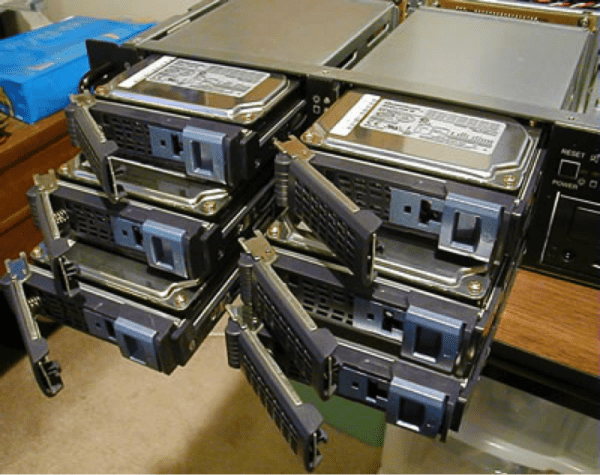
RAID 0 provides ultimate speed for your data – until something goes wrong and you need RAID recovery.
AID 0 provides ultimate speed for your data – until something goes wrong and you need RAID recovery.
For the ultimate in computer performance and speedy data access, nothing comes close to RAID 0 for disk arrays. Although the computer industry continues to innovate and develop new disk technologies, there is still nothing available that can compare with the raw data read/write speeds of RAID 0.
Using RAID 0 ensures that whatever the application, your data access speeds will not be bettered. That is until something goes wrong. When it does, you may find RAID recovery harder than expected.
To understand why RAID 0 makes data recovery complex, you first need to know a little bit about how this particular disk technology works.
Go faster stripes
In a RAID 0 array, data is written across each of the constituent drives simultaneously. There is no redundancy or error checking built into the array to ensure the highest possible data transfer rates. Every single disc is used as it becomes available.
Spotted the problem yet?
Each RAID technology (1, 5, 1+0 etc) is designed to add data redundancy routines that prevent data from being lost should any of the hard drives fail. In a RAID 1 array for instance, the same data is written across two “mirrored” disks. Should one of the disks fail, all of the data can still be recovered from the remaining working disk – the array should rebuild itself normally when the faulty disk is replaced. The same basic principle applies to all other RAID types apart from RAID 0.
In the RAID 0 array, the failure of one disk renders all of the data stored on all of the drives unrecoverable. The array will not rebuild itself and complete data cannot be pulled off the drives using standard recovery techniques.
RAID recovery in this scenario, although not impossible, is much harder than other array technologies.
RAID recovery for striped disk sets
It is important to realize that striped disk set RAID recovery is difficult, but it isn’t impossible. The first thing you need to realize though is that the recovery cannot be performed while your server/PC is running. You need to remove the physical disks and perform a sector-by-sector copy of each disk onto another identical unit.
So if you want a RAID recovery process that’s as quick as the disk access speeds, you will also need a matching set of disks in anticipation of a problem. You may also need to be able to access the physical disk platters of any “broken” drives – a job probably best left to the experts.
With sector copying complete, the final task is to bring the new array back online. There are two key factors to consider:
- The drives need to be brought back in the same sequence as the original array.
- The value of the data block stripe needs to be set correctly.
This task sounds simple but is actually a very delicate part of the RAID recovery process – get it wrong and the copied data will be lost. You will need to start the process all over again.
Speed or reliability?
RAID 0 is a great choice for applications that deal with vast data sets. For everything else, the data loss potential inherent in the array design means that you would be better choosing a safer alternative. Or you will need to keep the contact details of a RAID recovery specialist handy, just in case!
 Gearfuse Technology, Science, Culture & More
Gearfuse Technology, Science, Culture & More
